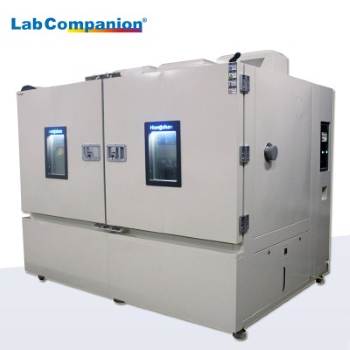Differences between High and Low Temperature Test Chamber and Constant Temperature Test Chamber
Nov 13, 2025
In environmental reliability testing, high-low temperature humidity test chambers and constant temperature and humidity test chambers are easily confused due to similar names, but they differ significantly in testing capabilities, applications and technical characteristics. Accurate distinction and selection are key to ensuring valid test data. This blog will analyze the core differences and provide selection suggestions.
I. Core Definition: Essential Distinction of Functional Boundaries
The core difference between the two starts with functional positioning, which directly determines the applicable scenarios.
The core of the constant temperature and humidity test chamber is "maintaining stability". It can accurately control and maintain the set temperature and humidity for a long time, and is used to simulate the long-term performance of products in specific environments, such as electronic component stability testing and textile temperature-humidity sensitivity testing. Its core requirement is "steady-state environmental performance verification".
The high-low temperature humidity test chamber focuses on "dynamic simulation". In addition to precise temperature and humidity control, it has a wide-range fluctuation capability, which can simulate environments such as high-low temperature cycles and alternating humidity and heat, such as extreme temperature differences during product transportation and diurnal temperature-humidity changes of outdoor equipment. Its core requirement is "dynamic environmental reliability verification".
II. Key Differences: Multi-dimensional Analysis from Technology to Application
1. Temperature and Humidity Range and Fluctuation Capacity
The constant temperature and humidity chamber has a mild temperature and humidity range (temperature 0℃-100℃, humidity 30%-95%RH) and high control precision (temperature fluctuation ±0.5℃, humidity ±2%RH), but no extreme temperature-humidity impact capability.
The high-low temperature humidity chamber has a wider temperature and humidity coverage (temperature -70℃~200℃, humidity 10%-98%RH) and rapid change capability (heating rate 3℃/min-15℃/min, cooling rate 1℃/min-10℃/min), which can realize rapid cycle switching between "high temperature and high humidity - low temperature and low humidity"—a feature unavailable in the former.
2. Differences in Core Technical Architecture
The constant temperature and humidity chamber adopts single-stage compression refrigeration, conventional resistance heating, and steam or ultrasonic humidification. Its system design focuses on "energy saving and stability", with simple structure and low operating cost.
To meet extreme needs, the high-low temperature humidity chamber uses cascade refrigeration, rapid-heating tubes, and its humidity system includes a fast-response dehumidification module, with a thicker insulation layer on the chamber wall. Its technical complexity and manufacturing cost are much higher than the former.
3. Applicable Scenarios and Testing Purposes
The constant temperature and humidity chamber is used for steady-state environmental adaptability testing, such as electronic component aging and pharmaceutical storage simulation, to verify the performance consistency and durability of products in a fixed environment.
The high-low temperature humidity chamber focuses on dynamic reliability testing, such as high-low temperature cycling of auto parts and extreme environment simulation of aerospace products, to expose product defects (material aging, structural deformation, etc.) under drastic environmental changes.
In summary, the constant temperature and humidity chamber guards the steady-state environment, while the high-low temperature humidity chamber challenges the dynamic environment. There is no absolute advantage or disadvantage between the two. Only by matching needs, clarifying scenarios and budgets can the test truly guarantee product quality.
إقرأ المزيد





